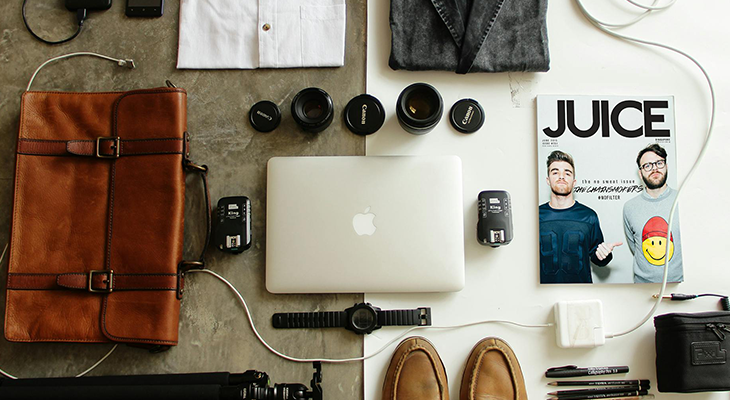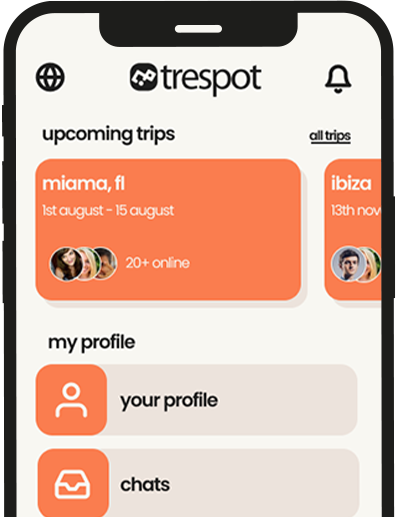Introduction: Why travel safety tips matter more in 2025
Travel is fully back—international arrivals have surged beyond pre‑pandemic numbers, and with them: crowds, opportunistic scams, new checkpoint tech, and shifting geopolitics. The upside? Governments, tourism bodies, and the private sector have rolled out better tools—STEP alerts, CDC Travel Health Notices, UN Tourism dashboards, and neighborhood‑level risk apps—to help you plan with precision. This guide consolidates the most current travel safety tips into one practical, no‑panic playbook.
1) The 10‑minute pre‑trip safety checklist
- Scan State Dept/FCDO advisories + CDC Travel Health Notices; save embassy numbers.
- Enroll in STEP (or your country’s registry) for alerts.
- Buy travel insurance with medical & evacuation coverage.
- Encrypt & duplicate documents (cloud + offline).
- Set up eSIM/roaming for constant data & 2FA.
- Create a paper emergency card (ICE, allergies, blood type).
- Pack to breeze TSA (3‑1‑1 liquids, batteries in carry‑on).
- Check neighborhood safety via GeoSure/Numbeo.
- Study local scams & create response scripts.
- Draft a Get Out Plan (backup hotels/routes/airport plan).
2) Research like a pro: Advisories, health notices, risk dashboards
- State Dept Country Pages: crime patterns, laws, emergency numbers.
- CDC THNs: outbreaks, vaccines, disasters.
- UN Tourism, GPI, Numbeo: macro safety indices & trends.
- Corporate risk portals (CWT/Global Rescue): concise, operational playbooks.
Pro move: Build a simple traffic‑light brief (Green/Amber/Red) for each destination to quickly align your group on dos and don’ts.
3) Register & insure: STEP, insurance, and emergency comms
- Enroll in STEP (US) or your country equivalent for push alerts & easier embassy assistance.
- Ensure your policy covers medical evacuation, interruption, political evacuation if needed.
- Save embassy/insurer lines and local emergency numbers (e.g., 112 in EU).
- Trip leaders: collect ICE info (securely) and share rally points + check‑in cadence.
4) Money & documents: Redundancy, vaulting, dark‑web risks
- Split funds: daily card & emergency card stored separately.
- Encrypted cloud vault for PDFs of IDs/visas/policies.
- Paper copies for hotels that hold passports.
- Protect against dark‑web leaks: shred boarding passes, 2FA your loyalty accounts.
- ATM safety: use machines inside banks/hotels; shield your PIN.
Unique tip: Freeze your credit file before long trips to blunt identity theft fallout.
5) Tech stack: eSIMs, VPNs, offline maps, CAT‑2 & digital IDs
- eSIM/local SIM for reliable data & emergency access.
- VPN on public Wi‑Fi to block snooping & AI spoof sites.
- Offline maps & docs for network dead zones.
- TSA CAT‑2 at some airports: expect changing ID workflows.
- Use GeoSure/Numbeo for street‑level risk intel.
Bonus: Use a burner email for public Wi‑Fi logins & random bookings.
6) Bags, batteries & borders: TSA 2025, power banks, prohibited items
- Arrive early, pack smart, follow ID rules—TSA’s still enforcing 3‑1‑1.
- Power banks/spare lithium batteries: carry‑on only, typically ≤100 Wh, terminals protected.
- Liquids & meds: 3‑1‑1 applies; declare reasonable medical quantities.
- Firearms & restricted items: strict penalties—always check airline/TSA pages.
7) Scams 2025: AI fakes, hotspot cities, and how to respond
- Watch for AI‑generated booking sites & fake socials.
- High‑scam cities (e.g., Barcelona, Bangkok, Istanbul, Riga, Budapest): treat as amber zones, not no‑goes.
- Scripts: “No thanks, I already booked / I’m meeting friends.”
- Security: 2FA, verified apps, virtual cards, VPN.
Pro move: Carry a decoy wallet with expired cards & small cash (worst‑case scenario tactic).
8) Pickpockets & petty theft: Practical streetcraft
- Crossbody/anti‑theft bags up front; loop straps around chair legs.
- Phone discipline—don’t stroll with it out in busy areas.
- Adopt a “phone–wallet–passport” tap routine whenever you stand up.
- Transit hubs/markets/festivals = high risk—increase vigilance.
9) On‑the‑ground protocols: Transit, lodging, rides, nightlife
- Transit: sit near others at night; avoid empty cars.
- Rides: verify plate/driver; never say your name first.
- Lodging: use secondary locks; consider a door wedge.
- Nightlife: watch drinks poured; pre‑plan your ride back.
10) Political instability, disasters & civil unrest planning
- Monitor embassy feeds & local news; know curfews & laws.
- Prep cash, docs, charged power bank, buddy check‑ins.
- Know the shelter‑in‑place vs. evacuate triggers.
Create a one‑page “Crisis Micro‑Plan”: rally point, contacts, exit routes, emergency numbers, check‑in cadence.
11) Health security: Vaccines, THNs, meds & local care
- Consult CDC THNs and a travel clinic 4–6 weeks out.
- Carry a basic meds kit (including electrolytes/ORS).
- Save the nearest hospital/clinic and your insurer’s direct‑pay network.
12) Solo & LGBTQ+ travelers: Extra layers of situational awareness
- Solo: share itinerary, stay central, eSIM for data, trust your gut, leave without explaining.
- LGBTQ+: research local laws/attitudes; carry low‑profile ID if necessary.
- Women: consider women‑only transit compartments; be vigilant about drink spiking & ATM shoulder surfing.
13) Travel with kids, students & seniors: Tailored safeguards
- Students: STEP enrollment, theft prevention, crossbody bags.
- Seniors: medical summaries, pre‑book wheelchair assistance, shorter transfers.
- Families: set meeting points; give kids laminated info cards.
14) Safest vs. most risky: Peace indices, scam maps & what to do with them
Use the Global Peace Index, Numbeo’s Safety Index, and UN Tourism trends to choose destinations—but always pair macro data with country advisories and neighborhood apps for a real‑world view.
Quick Takeaways
- Layer your intel: UN/GPI → State/CDC → neighborhood apps.
- Enroll in STEP (or equivalent) + buy evac‑ready insurance.
- eSIM + VPN + offline maps = safer navigation & comms.
- Power banks: carry‑on only, ≤100 Wh typical, terminals protected.
- AI scams are up—verify URLs, 2FA your loyalty accounts.
- Write a crisis micro‑plan before you fly.
Conclusion
Safety is a system, not a hack. In 2025 that system blends layered research, official alerts (STEP, CDC THNs), smart tech (eSIM, VPN, 2FA), and on‑the‑ground habits that make you a hard target. Add lithium battery compliance, document redundancy, and a one‑page crisis micro‑plan, and you’ll move through the world confident—not complacent.
Whether you’re solo, leading a travel meetup, or taking your family abroad, the right prep buys freedom: you’ll say yes to more because you’ve already mitigated the big “what ifs.” So—what’s the one safety upgrade you’ll implement today: STEP enrollment, an insurance check, or a crisis micro‑plan? Tell us below and share this with your travel circle so everybody levels up.
FAQs - Travel Safety Tips
Enroll in STEP (or your country’s registry) and read your destination’s advisory + CDC Travel Health Notice. You’ll get alerts and understand key risks before you land.
Yes—only in carry‑on, generally ≤100 Wh without airline approval. Terminals must be protected, and many airlines actively enforce the rule.
Use a VPN, verify URLs, enable 2FA, and book through official or highly trusted platforms. Cross‑check reviews across multiple sources.
They’re a helpful starting point—combine them with country advisories, CDC notices, and neighborhood apps for an accurate, real‑time picture.
Write a one‑page crisis micro‑plan: rally points, exit routes, embassy & insurer numbers, and a check‑in cadence. Save it offline & share it with someone you trust.
References
- U.S. State Department — Travel Advisories & Country Pages
- Smart Traveler Enrollment Program (STEP)
- CDC — Travel Health Notices
- TSA — Travel Tips & CAT‑2 / ID guidance
- IATA — Lithium Battery Rules
- UN Tourism — Recovery & Safe Destinations Challenge
- Investopedia — Cities with highest travel scam risks (2025)
- Global Peace Index
- Nomadic Matt — Travel Safety Tips 2025
- Penn State Global — Student Travel Safety Tips
- CWT — Corporate Travel Safety Tips
- Global Rescue — Security & Political Evac Guidance
- World Nomads — Global Travel Safety & LGBTQ+ Guidance
- Rick Steves — Outsmarting Pickpockets
- Numbeo — Safety Index
We synthesized overlapping advice from official government/health sources, corporate risk playbooks, and trusted travel publishers to produce a single, practical 2025 safety system.



